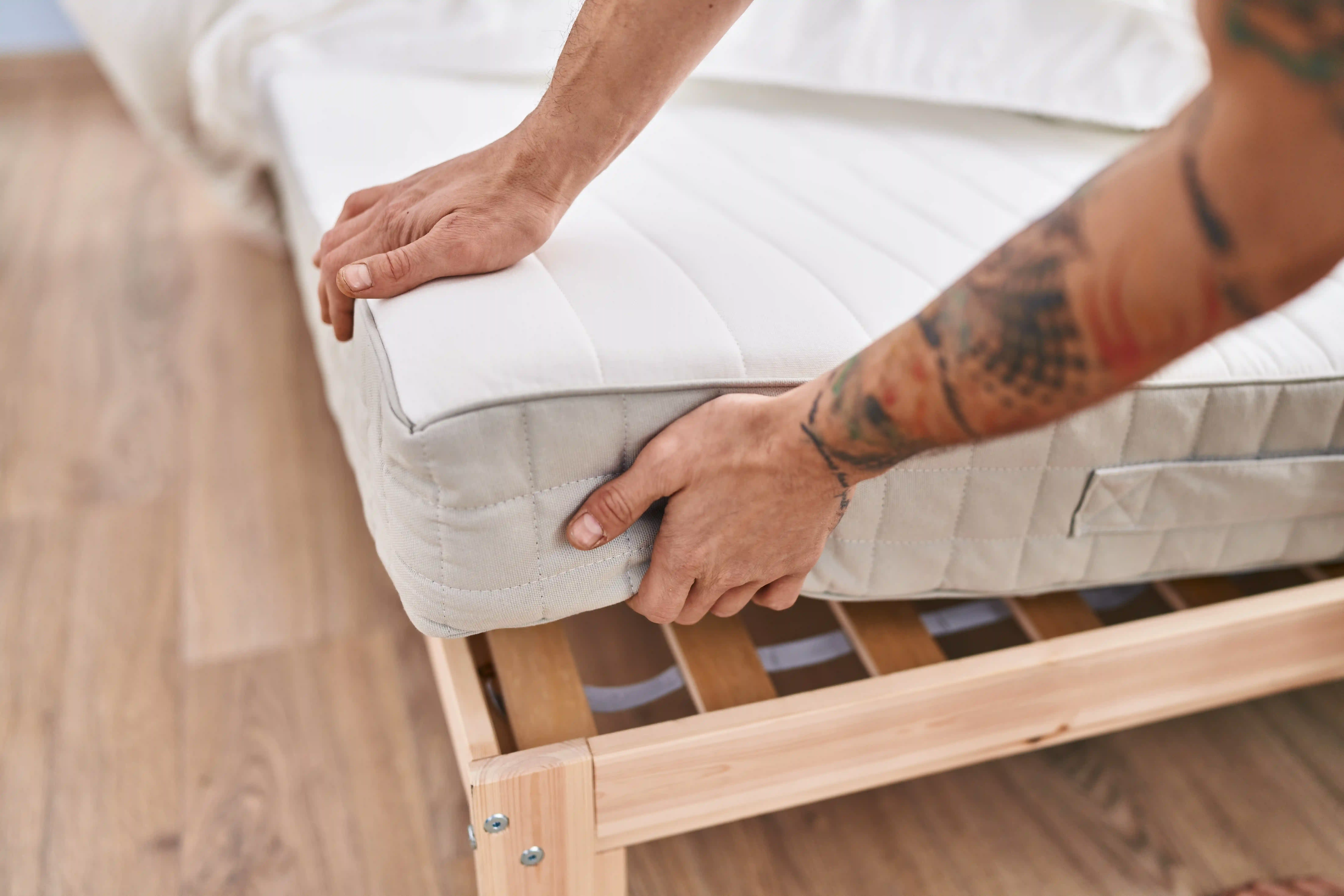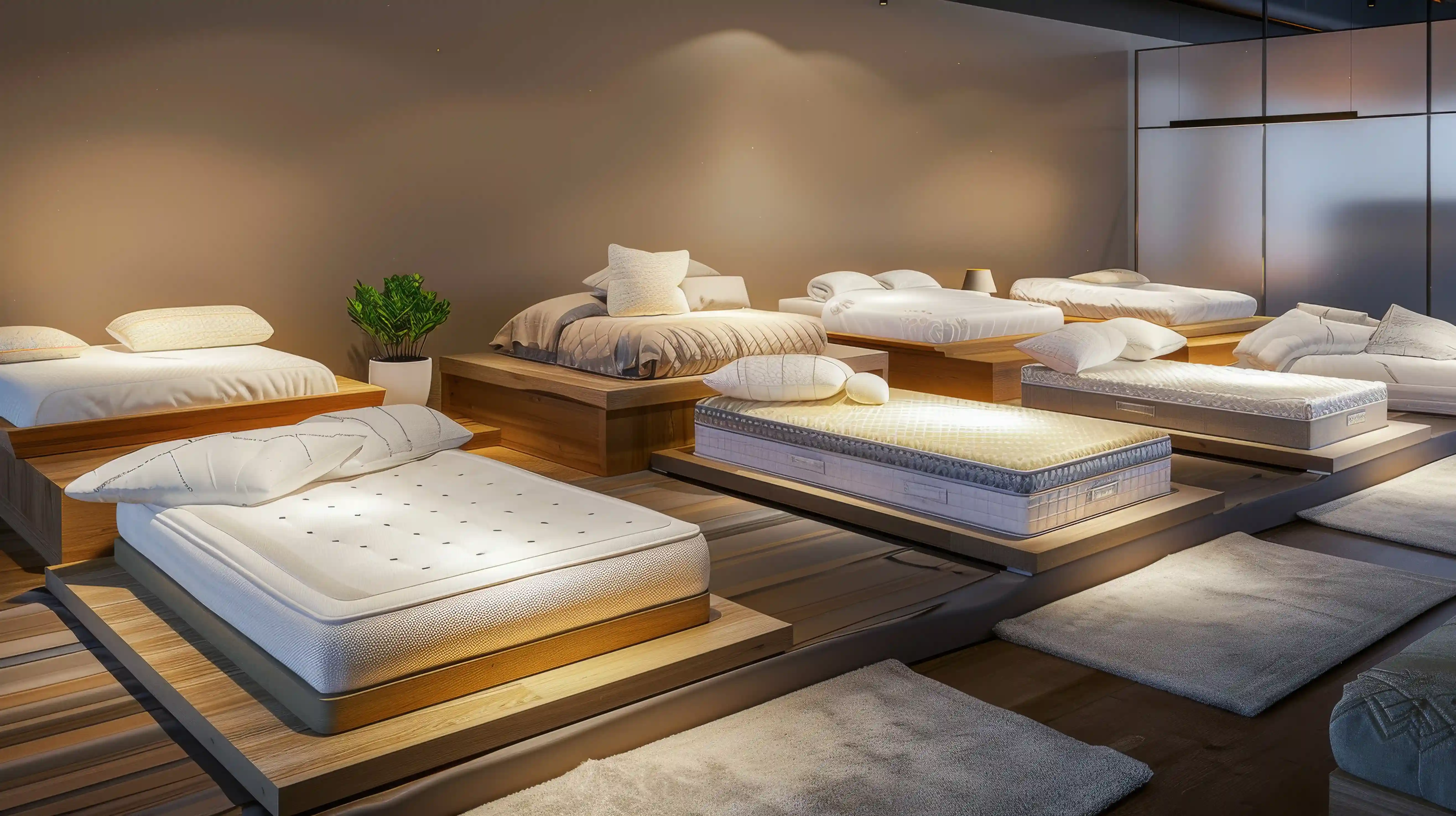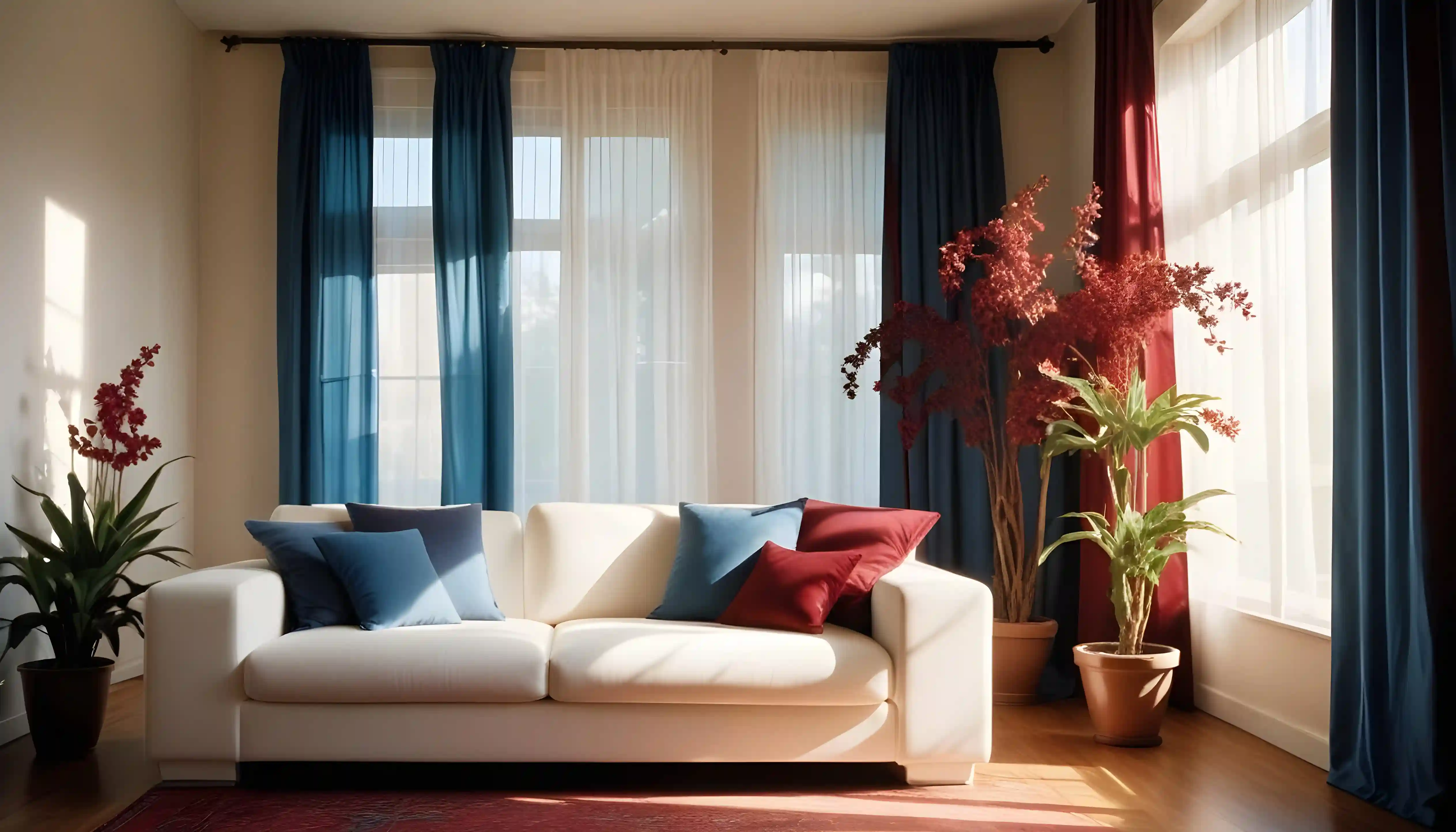
Buying a sofa is one of the most important investments you're likely to make for your home. In the living room it's a piece for lounging, reading, eating, entertaining, watching TV, and even napping, so it makes sense that we take the time to invest in one that's going to last for years to come.
From taking measurements to choosing the best frame and collecting fabric swatches, these are eight things you should consider before buying a new sofa.
You know when you're on the hunt for a new mattress and you do the age-old bottom test? The same theory applies to a sofa. The average sofa has a seat depth of at least 60cm, which gives plenty of room to manoeuvre if you have long legs, and allows you to tuck them under if you're shorter. But seat depths do vary, so definitely try out different styles to ensure you get good back support. When it comes to seat height, most designs are between 45cm and 50cm high. There's no right or wrong height, so again, try before you buy to make sure it suits you.
Sarah Humphreys, Senior Buyer at DFS, says it's important to consider how you like to lounge. For example, if there are two of you and you both like to sit with your legs up, then check that the sofa is deep enough to accommodate you both. Or consider a chaise end or recliner sofa, if you have the space to accommodate one.
If you prefer to lie down on your sofa, make sure that it's long enough for you to stretch out. Taller people may also like to consider a sofa with a higher back to offer extra support.
Spend as much as you can afford on a quality frame - it will see you through many years of lounging. A solid hardwood frame is a good option, but be wary of a particleboard or metal construction. Also, take note of the guarantee before you commit - always opt for manufacturers who offer at least a 15-year guarantee
Seeing physical samples of a sofa in your living room can make all the difference. Without swatches, it can be difficult to judge the scale of a pattern repeat, or how the light in your living room affects the colour or sheen of a fabric.
Most retailers will offer free or low-cost swatches that can be gathered alongside paint swatches or wallpaper samples if you're redesigning your whole space. We would always recommend a physical moodboard, but if you're more digitally minded, there are plenty of great design apps or websites (from Pinterest to Canva) that can help you organise your design scheme
Remember that what's inside a sofa is just as important as what's used on the outside. When it comes to the sofa back and seat, feather-filled cushions are high on comfort but they will need regular plumping, while foam or fibre fillings may flatten out and lose their shape over time.
The perfect solution? The team at Sofa.com recommend choosing a combination of feather and foam as feathers give the squish while the foam provides structure. Back cushions filled with feathers and seat cushions filled with foam or fibre works well.
Whether you go for a bold colour, pattern, or a neutral, your choice of upholstery fabric will have a huge impact on the room, so choose carefully to ensure it fits with your scheme. Natural materials may fade in strong sunlight so go for a synthetic fabric if the sofa will be near a window.
It's particularly important in a busy family home, and if you have a dog or cat, opt for a fabric that's easy to spot clean. Leather, microfibre, velvet, and canvas are all good options in this case, whilst textured weaves are hard-wearing and more forgiving of stains. Loose cover sofas are worth investigating, as they can be removed for cleaning and some are washable too
As a rule, you should always invest in pieces you will use the most. So, if you're someone who loves to relax in front of the TV, setting aside a larger budget for your new sofa is a must, says Anne Haimes, Design Director and Founder of Anne Haimes Interiors.
However, you should be wary of splurging on a sofa that is too trendy if you want your investment to go the mile. Velvet, bouclé and curved sofas have dominated social media in recent years, but you should think long and hard before making a big purchase on something that could fall out of fashion quickly or doesn't truly suit your lifestyle.
Instead, I'd recommend putting money behind classic styles and fabrics which are timeless and will suit most décor styles years down the line. To get the most out of your furniture, choose durable fabrics such as leather, canvas or cotton that can withstand wear and tear.
There is nothing worse than buying furniture that doesn't fit your space (remember Ross Geller's iconic PIVOT sofa scene in Friends?), so before you do anything, measure up. Get out the tape measure and make sure you're certain of the maximum sofa dimensions that will fit, and suit, your space.
According to Sarah at DFS, it's important to note both the width (the measurement across the back of the sofa) and the depth (the measurement from the back of the sofa to the front.) Pay attention to the depth of the sofa if you're buying for a smaller room, as the depth of the seat rarely changes from the larger to smaller size sofas, she says. And consider the height of the sofa, particularly if your room has radiators or shelving.
One tip for making sure that your sofa will fit in your space is to cut out the shape of your sofa from newspaper and place it on the floor in the room. Sarah says: This allows you to check that you have enough space to walk around it with ease and that you've left enough room for shelves, radiators and other pieces of furniture, as well as the opening of cupboards, doors and windows.
Finally, check the dimensions of any doors and stairways the sofa will have to pass through on delivery - your unscuffed walls will thank you.
f access is limited, you may need to opt for a low-back style, one with removable legs or even a modular sofa that can be delivered in sections. Or if you have a small room, consider a two-seater or a loveseat. You might have your dream sofa in sights but you have to be practical too. The good news is that it's never been easier to customise a sofa to make it really work for you and your space.
Gone are the days when opting for extra functional features in a sofa - like a sofa bed or a recliner - meant compromising on style. Consider features beyond a standard two or three-seater. Would you benefit from an integrated footstool? Would a sofa bed do away with the need for a guest bedroom? Do you need a loose cover that you can clean regularly? Consider its adaptability too. Modular sofas, for instance, are a total gift because they are adaptable to your needs - it's common to break up your modular sofa when you have company, placing a coffee table in between units to make your living space more conducive to socialising. Your sofa can work harder for you if you invest in the right model from the get go











